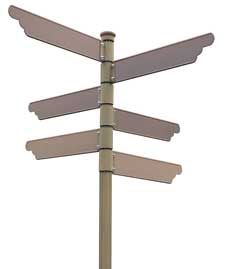Your business doesn’t work in a vacuum, why should your forecast?
 Have you ever wondered whether any leading indicators external to your systems have any meaning to actual demand for your products? Demand Commander can look at massive amounts of causal factor data frequently available through subscription services and tell you if they are relevant to your products, and if so, which ones. So whether you are in the CPG business and use information from Information Resources, Inc., or you are in the paper business and use futures commodity pricing to try and gain better understanding of demand, Demand Commander can easily take in that data and use it for forecasting, if its relevant. Other example factors include interest rates, consumer sentiments, and trend data.
Have you ever wondered whether any leading indicators external to your systems have any meaning to actual demand for your products? Demand Commander can look at massive amounts of causal factor data frequently available through subscription services and tell you if they are relevant to your products, and if so, which ones. So whether you are in the CPG business and use information from Information Resources, Inc., or you are in the paper business and use futures commodity pricing to try and gain better understanding of demand, Demand Commander can easily take in that data and use it for forecasting, if its relevant. Other example factors include interest rates, consumer sentiments, and trend data.
As point-of-sale data integration becomes more and more widespread, Demand Commander mines valuable information from detailed data regarding what end-users are buying (for example, every time an item is scanned at a store, that information is stored as point-of-sale data). Properly used, this data can be incredibly valuable, especially in judging the effectiveness of promotional events. The challenge is in managing the sheer volume of this data. Demand Commander meets the challenge, automatically culling out the valuable information from this sea of data, quickly and effectively. Very few forecast products take advantage of POS data, and none as fully as Demand Commander. If an item is on sale this week at Wal-Mart, for example, the salesperson can see how the item is moving at the registers, and use this information to refine the shipments forecast. Demand Commander provides visibility on how much of the product is already in the retailer’s stock, a further guide to how much they will order. With a better understanding of the real impact of promotions, salespeople can do a better job of planning future events.
